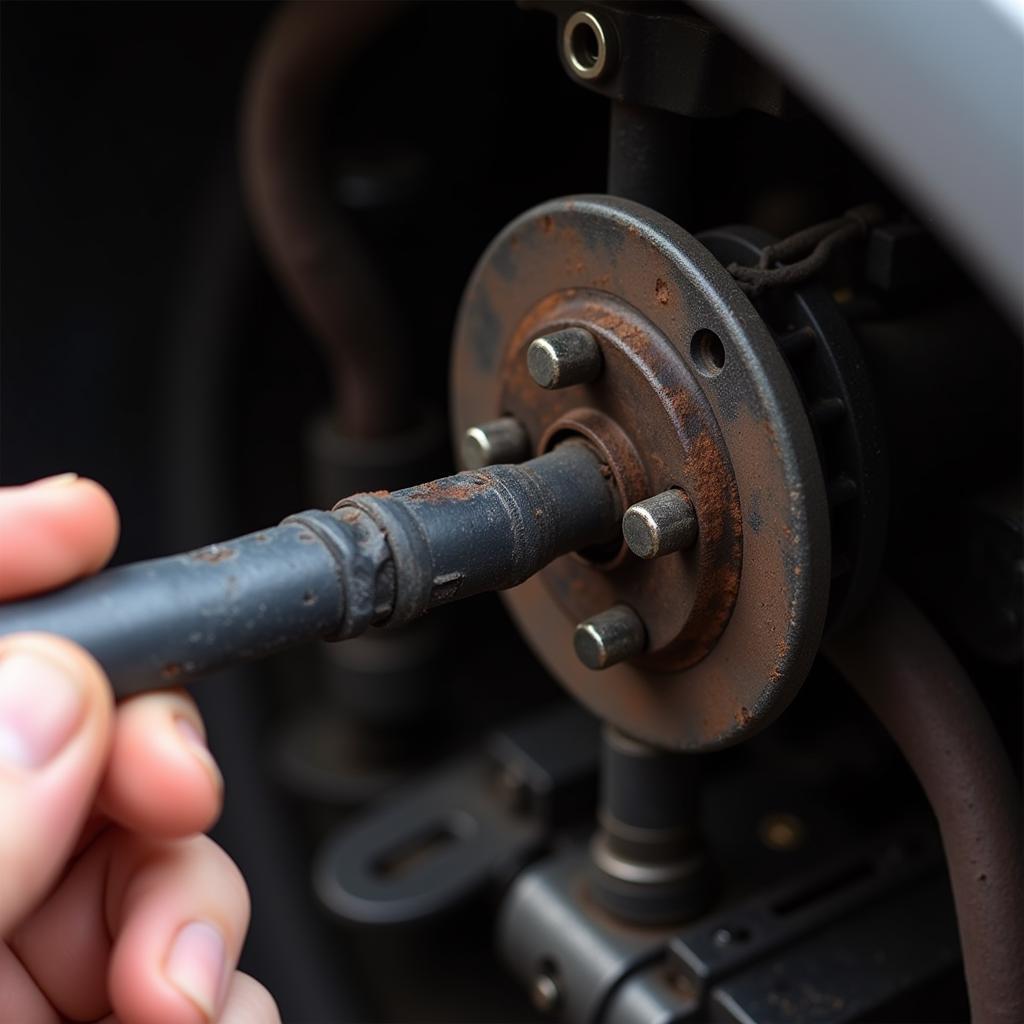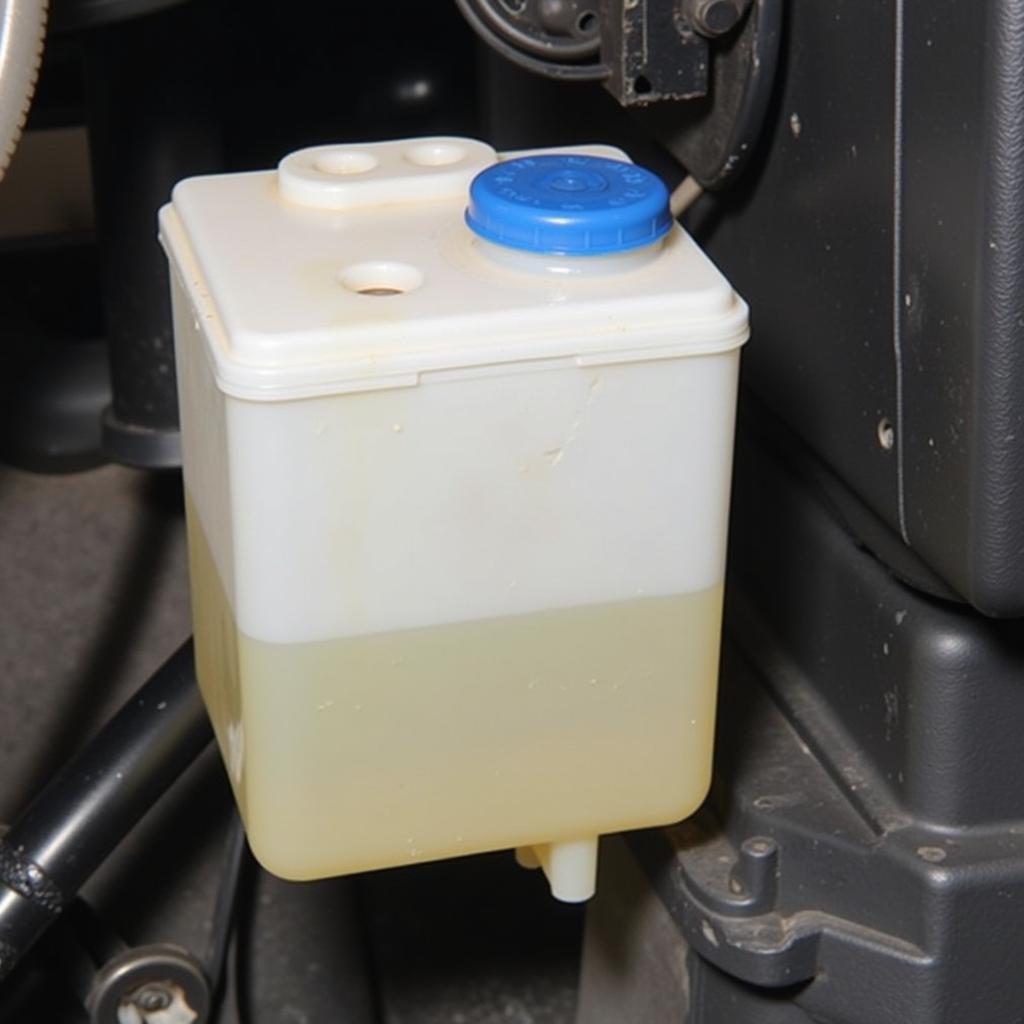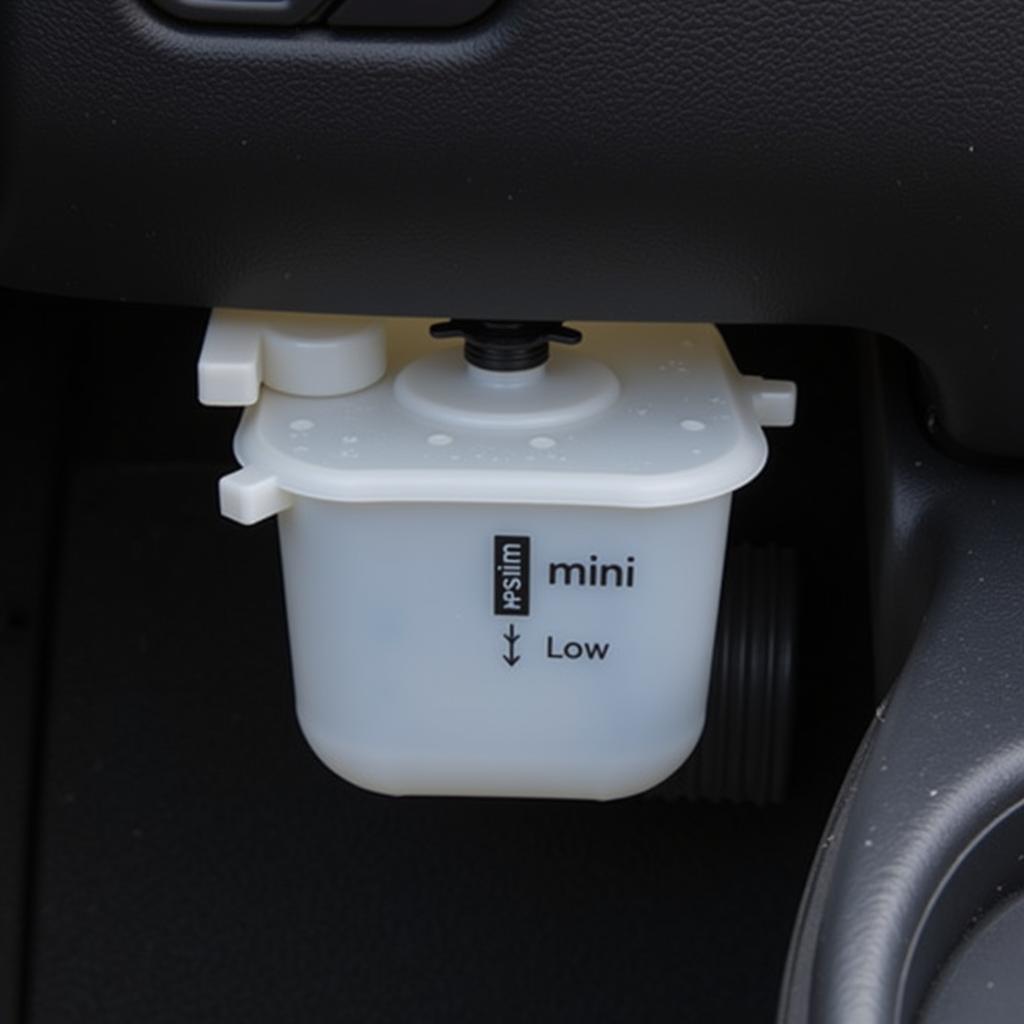The parking brake warning light on your dashboard is an essential safety feature. It illuminates when your parking brake is engaged and serves as a reminder to disengage it before driving. However, if the parking brake warning light stays on even when the brake is released, or if it flickers intermittently, it indicates an underlying issue that needs your attention.
This comprehensive guide will delve into the common causes of a parking brake warning light, how to diagnose the problem, and the potential solutions.
Understanding the Parking Brake System
Before we dive into troubleshooting, it’s important to understand the basic components of your car’s parking brake system:
- Parking Brake Lever/Pedal: This is what you engage and disengage to activate the parking brake.
- Cables: These connect the lever/pedal to the brakes.
- Brake Shoes/Pads: These press against the brake drum or rotor to create friction and stop the vehicle.
- Parking Brake Switch: This sensor detects whether the parking brake lever/pedal is engaged or released and sends a signal to the dashboard warning light.
Common Causes of a Parking Brake Warning Light
There are several reasons why your parking brake warning light might be on or malfunctioning:
- Engaged Parking Brake: The most obvious reason is that the parking brake is not fully released. Always double-check your lever/pedal before moving your vehicle.
- Low Brake Fluid: Brake fluid is crucial for a functioning brake system. If the fluid level is low, it can trigger the warning light. This usually points to a leak in the system.
- Worn Brake Shoes/Pads: Over time, brake shoes and pads wear down. If they become too thin, they can activate the warning light.
- Faulty Parking Brake Switch: The switch itself can malfunction due to wear and tear, corrosion, or damage. A faulty switch might send a false signal to the dashboard, causing the light to stay on.
- Stretched or Broken Parking Brake Cable: The cable connecting the lever/pedal to the brakes can stretch or break, preventing the parking brake from fully disengaging.
- Electrical Issues: Issues with the wiring, fuses, or connections related to the parking brake system can also lead to a malfunctioning warning light.
Diagnosing the Problem
To pinpoint the exact cause of the parking brake warning light issue, follow these steps:
- Check the Parking Brake: Ensure the parking brake is completely disengaged. Sometimes, a slight bump can re-engage it partially.
- Inspect Brake Fluid Level: Locate the brake fluid reservoir under the hood and check the fluid level. If it’s low, there’s likely a leak that needs immediate attention.
- Visually Inspect Parking Brake Components: If possible, have a look at the parking brake cables for any signs of damage, stretching, or corrosion.
 Inspecting a Car's Parking Brake Cable
Inspecting a Car's Parking Brake Cable
- Test the Parking Brake Switch: The switch’s location varies by car model, but it’s usually found near the lever/pedal. You can test it by disconnecting the switch and checking for continuity with a multimeter.
- Scan for Trouble Codes: Many modern vehicles have onboard diagnostic systems. Using an OBD-II scanner can reveal specific trouble codes related to the parking brake system, providing more precise diagnostics.
Solutions and Repairs
Once you’ve identified the root cause, here are the potential solutions:
- Add Brake Fluid/Repair Leaks: If the brake fluid is low, top it off to the recommended level. However, address any leaks promptly to avoid further issues. Consult a mechanic for leak repairs.
- Replace Worn Brake Shoes/Pads: Worn-out brake shoes or pads require replacement. Consider having both sides replaced simultaneously, even if only one side is worn.
- Replace Faulty Parking Brake Switch: If the switch is faulty, it needs to be replaced. This is a relatively simple repair for most vehicles.
- Adjust or Replace Parking Brake Cables: Stretched or broken cables need adjustment or replacement. This task is often best left to a mechanic.
- Address Electrical Issues: Fix any damaged wiring, replace blown fuses, or clean corroded connections.
When to Consult a Professional
While some parking brake issues can be addressed with DIY fixes, it’s often best to consult a qualified mechanic, especially if:
- You’re not comfortable working on your car’s brake system.
- The problem persists even after trying basic troubleshooting.
- You suspect a serious issue like a brake fluid leak.
Preventing Future Issues
To minimize the chances of a parking brake warning light issue, consider these preventive measures:
- Regular Brake Inspections: Have your brakes inspected annually or as recommended in your owner’s manual.
- Timely Brake Fluid Changes: Brake fluid deteriorates over time. Follow the recommended service intervals for fluid changes.
- Avoid Riding the Parking Brake: Don’t drive with the parking brake even slightly engaged, as it can lead to premature wear and other problems.
Conclusion
A glowing parking brake warning light shouldn’t be ignored. It’s often the first indicator of a potential problem with your car’s vital braking system. By understanding the common causes, performing basic troubleshooting, and knowing when to seek professional help, you can ensure the safety and reliability of your vehicle.
Important Note: This guide provides general information. Always refer to your vehicle’s owner’s manual for specific instructions and recommendations related to your car model. If you’re unsure about any procedure, it’s best to consult a qualified mechanic.


